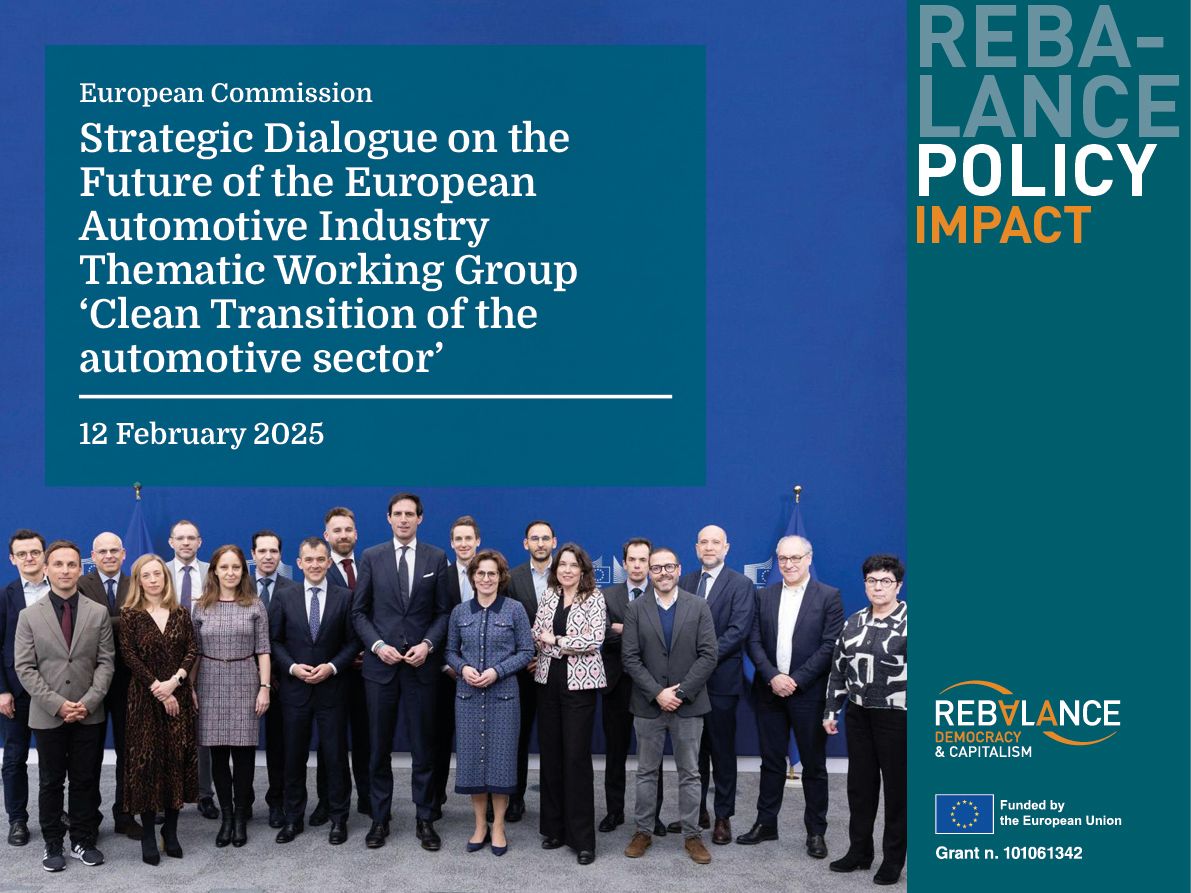The Strategic Dialogue on the Future of the European Automotive Industry was launched by President von der Leyen on 30 January 2025. It is based on a consultative process including technical discussions. Commissioner Hoekstra will lead a Technical Working Group focusing on the Clean Transition of the automotive industry, including both light and heavyduty vehicles. The transition to clean mobility poses challenges and offer opportunities for the sector to develop new markets, to innovate and to help lowering the dependence on fossil fuels. In this context, the Thematic Working Group on the Future of the European Automotive Industry Thematic Working Group ‘Clean Transition of the automotive sector’ has discussed the regulatory framework, the development of infrastructure for light and heavy-duty vehicles (both recharging infrastructure and electricity grid), as well as measures for demand stimulation.
List of participants:
https://ec.europa.eu/commission/presscorner/detail/en/ac_25_472
This is the position expressed by Professor Francesco Zirpoli, Center for Automotive and Mobility Innovation, Ca’ Foscari University of Venice and P.I. of the Ca’ Foscari unit of the
Horizon Project REBALANCE:
“Regulation (EU) 2023/851 of the European Parliament and of the Council of 19 April 2023,
which amends Regulation (EU) 2019/631 to strengthen CO₂ emission performance standards for new passenger cars and new light commercial vehicles in line with the Union’s increased climate ambition, sets out a clear roadmap toward zero-emission vehicles and the phase-out of internal combustion engines by 2035, with a monitoring phase scheduled for 2026.
There is no evidence or data suggesting that this roadmap should be altered in 2025, including delaying or waiving penalties for carmakers that fail to meet the 2025 targets. Changing CO₂ targets could lead to three potentially harmful long-term consequences:
- It would distort the current industry dynamics, favoring less innovative OEMs and thereby weakening EU competitiveness. Notably, carmakers’ positions on penalties are
highly heterogeneous, with some already in compliance and others launching new small,
affordable electric vehicles in 2025 to meet the targets by year-end. - It would erode consumer confidence in the EU Green Deal, potentially affecting purchasing decisions. The current debate and speculation about regulatory changes create uncertainty for potential buyers, further slowing down the market for Electric Vehicles (EV).
- Weakening the regulatory framework could jeopardize the entire roadmap to 2035, increasing the risk of failing to meet the Paris Agreement targets and exposing European citizens to serious health risks. On this last point, the dilution of Euro 7 emission standards in 2024 (described as “Euro 7 on tailpipe emissions is Euro 6 in disguise”) was a compromise reached after carmakers committed to meeting the 2025, 2030, and 2035 CO₂ targets.
To address the current challenges in the automotive industry, the EU should focus on creating the conditions necessary to regain technological leadership over China and the US. The loss of competitiveness stems from lower capital expenditures (CAPEX) and, more broadly, a slowdown in innovation in key areas of product development and process engineering.
Europe needs to leverage its strengths, which are traditionally linked to innovation and highly skilled jobs.
Coordinated funding—through various forms of financial support—could be granted to European inter-firm networks or consortia, involving OEMs, first- and second-tier suppliers
across EU countries. These efforts should focus on three key areas: 1. Batteries, 2.
Electronics and semiconductors, 3. Software and AI.
Specific tools should be implemented to support jobs and reskilling for a just transition.
Finally, Europe could develop an “eco-score” to provide consumers with clear and transparent information on the environmental footprint of the cars they purchase. This would serve as a flexible political tool, adaptable to different national and city policies and priorities through financial and non-financial incentives. The eco-score could also influence consumer demand and OEMs’ design and manufacturing strategies—potentially through specific conditionalities—toward smaller, more affordable, and less energy-consuming cars.”










